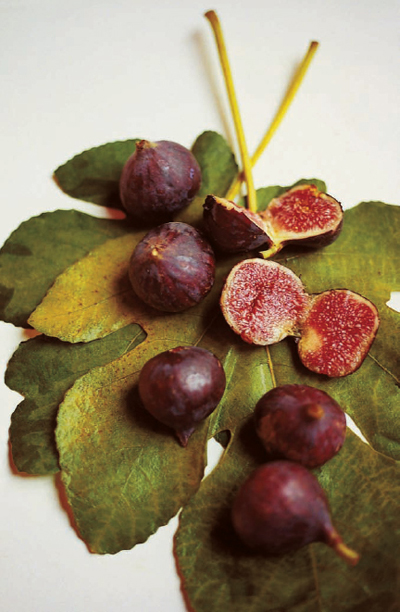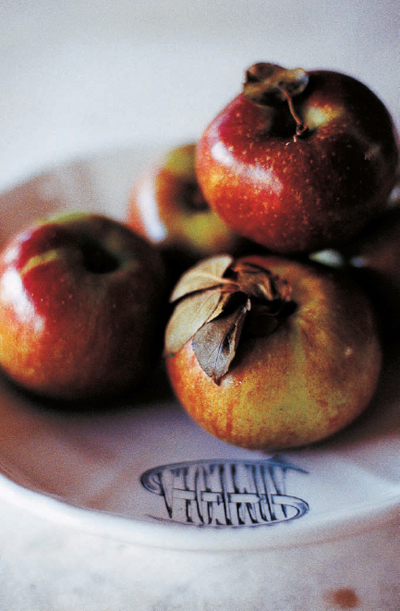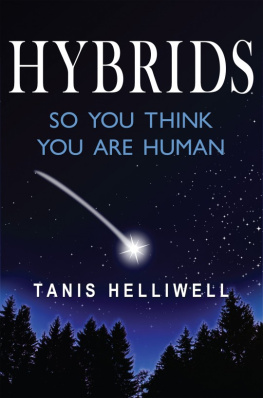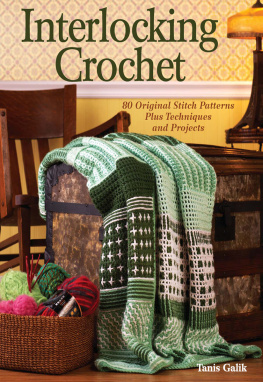
a platter of figs
and other recipes
david tanis
FOREWORD BY ALICE WATERS
PHOTOGRAPHS BY CHRISTOPHER HIRSHEIMER
ARTISAN
Copyright 2008 by David Tanis
Photographs copyright 2008 by Christopher Hirsheimer
All rights reserved. No portion of this book may be reproducedmechanically, electronically, or by any other means, including photocopyingwithout written permission of the publisher.
Published by Artisan
A Division of Workman Publishing Company, Inc.
225 Varick Street
New York, NY 10014-4381
www.artisanbooks.com
Library of Congress Cataloging-in-Publication Data is available.
eISBN: 9781579655945
Do you really need a recipe for a platter of figs? No. Is that the point? Yes. Does it have to be more complicated than that? Not really. Yet to serve the figs, you need to know about ripeness and seasonalitythe seasons of the gardenand you need to know your figs. By this I mean, are they sun-ripened and bursting with jammy sweetness? Are they succulent enough to eat as is, or do they want a sprinkling of salt, a drizzle of good olive oil, perhaps a thin slice of prosciutto? A dab of fresh ricotta and honey to heighten the flavor? Or should you roast the figs with onions and thyme and serve them warm with rare-grilled duck breasts? This will determine their place in the menuthat is, as a first course, a main-course accompaniment, or a simple dessert.
The platter of figs perfectly illustrates the idea of eating with the seasons. Fresh figs are available for only a few weeks in the summer. The first figs are in June, but June figs usually pale in comparison to the late-summer crop, which benefits from warm August days. As with good tomatoes, you wait all year for the best figs to arrive. The reward is heavy, juicy fruit with oozing centerssweet figs to swoon for. Above all, the platter of figs is a metaphor for the food I like. Fresh ripe figs are voluptuous and generous, luxurious and fleeting. And beautiful.
DT
CONTENTS

FOREWORD by Alice Waters
There are two or three things I love about David Tanis that are not in this book. His hands, for one thing. There is a still picture on , but when his hands are working, which is often, they are beautiful to watch: the fingers move with a practiced and graceful rhythm that reminds me of a great dancer at the bar. And I love Davids habit of galvanizing himself by bursting into song in his big baritone. He has an impressive memory for words and music from a startlingly eclectic sampling of the twentieth-century songbook; and his delivery is compelling.
What you will learn about David in this book is why he is one of the most important reasons our restaurant Chez Panisse remains a relevant enterprise well into the twenty-first century: He understands that creating a meal means creating your own reality, and he embodies that principle, week after week. We have always operated Chez Panisse on a rather archaic table dhte model: Every day we prepare and serve one menu, and one menu only, of three or four or five courses. The composition of a menu requires both tactical mastery and a well-tuned sense of taste; and its execution has to reconcile imagination with practicality. In these regards, Davids menus are incomparable. Whatever the occasion, they all share a certain quality of harmonious simplicity uniquely his. And this book contains twenty-four of them, each a little masterpiece, and not least because not one of them requires heroic effort on the part of the partygiver.
When David started his career as chef at Chez Panisse, I asked him to make an impromptu lunch for me one day. It was that lunchs radical simplicity that won me over completely: He served me a piece of salmon on a little cutting board, with a bowl of salt alongside and a little lightly dressed pile of tiny greens. That was all. But it turned out to be exactly what I wanted. The salmon was exquisitely cooked; the greens were perfect. All the details were both intriguing and satisfying, with an underlying current of serious whimsy. For example, where had that board come from? We had plates, after all. Over the many years that have followed, Davids sense of proportion and surprise has never failed him.
Now he has given us a very happy book, gloriously illustrated by Christopher Hirsheimer, who is just about the only food photographer I know who fully sees the beauty in simple food. And I can attest that Davids food does, indeed, lookand tasteexactly as you would imagine from a close inspection of these images.
Davids food reminds me so much of my ideal of what Chez Panisse should be, but this book is not a tribute to any restaurant or to any particular place and timethis book is really a love letter to you the reader, to whom David addresses himself with understanding, candor, and real wit. May you read it with pleasure!
A WAY TO EAT
This is a book about eating as much as it is about cooking. About eating with friendsand cooking for friendsand why that matters so much. Let me paint you a picture. The scene is Venice, Italy, in the autumn. The sun sets early in a gray sky. Bright orange persimmons hang on dark leafless branches. Its the cold-weather version of Venice, with rainy days and flooded walkways. (If this example sounds too rarified, imagine us in Baja, or Brooklyn.)
As it happens, its Bobs birthday, which provides an excuse for a party. Instead of going to a restaurant, wed rather cook together. Always. Of all the places we are staying, Alices apartment has the best kitchen and biggest dining table, so well have dinner there. We rendezvous in the morning at the old, old market by the Rialto Bridge. As we stand upon a history of wet stone, the party has already begun.
Our favorite stop for espresso is tiny and outdoors, near the vegetable side of the market. You get a perfect coffee there, and a little panino of rucola and speck with a dab of garlicky pesto. Its necessary to fortify yourself before moving on.
The cheese shop next door, not much bigger and hospital clean, displays oils, egg pasta, and ravioli, but more to the point: real ricotta, spanking fresh mozzarella, irresistible pale white quivering cheeses. We dont resist. Our cheese is wrapped in paper, and we buy sliced prosciutto and mortadella, necessary for the aperitivo, hours hence.
Next, the vegetable standsan autumn palette for the palate. Piles of green feathery fennel, purple grapes in boxes of straw, chicories in every color of burgundy. Honey-colored long-necked pears wrapped in pale tissue. Blushing pomegranates. Wild mushrooms, chestnuts. Now the fun starts in earnest. For me, this is the way the best meals begin: ogling vegetables, seeing whats at the market, what looks good, what feels right. Dinner for eight, maybe ten. Spur of the moment. Spread out and conquer.
Beneath the portico of the pescheria, the ancient fish market, miraculous creatures sparkle under bare bulbs. One lanky fishmonger is playing a rumba on the radio and dancing among the tuna and salt cod and the baskets of tiny live crabs. We see cuttlefish in every size from miniscule to giant, and wiggling gray shrimp from the lagoon. Another guy has the front half of a swordfish, including the sword. As soon as the marketing is finished, we schlep all our shopping bags to the nearby Cantina Do Mori, the best little wine bar in all Italy, for a stand-up glass of prosecco and a little prosciutto. Maybe a crostino of artichoke or porcini. Maybe another glass of something. Then we drag the shopping bags back to the refrigerator at Alices place, and everyone goes their own way for the rest of the day.
Next page








